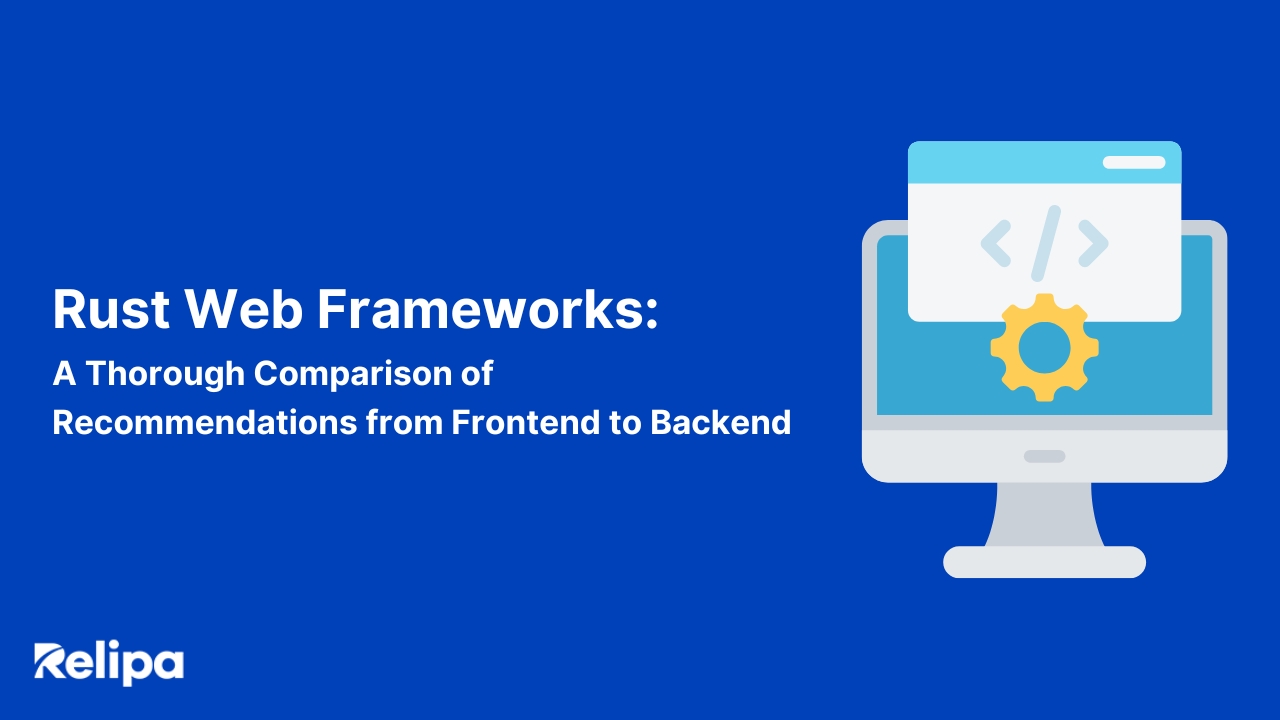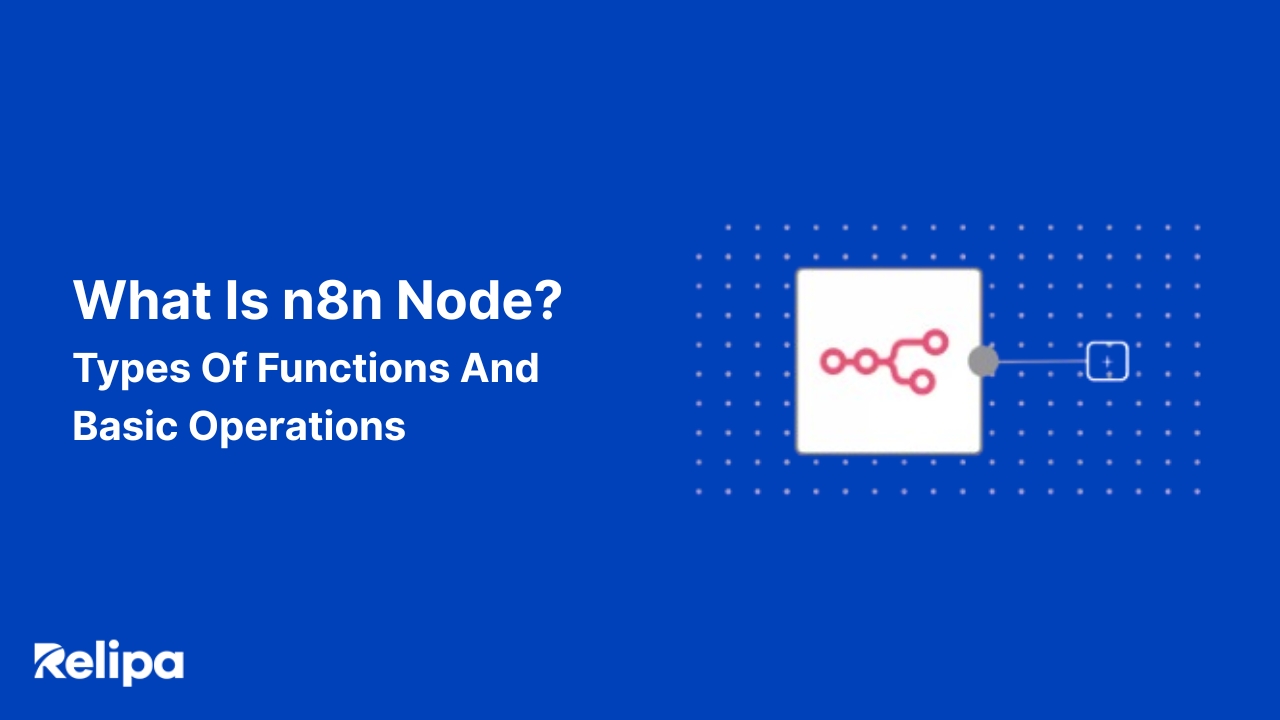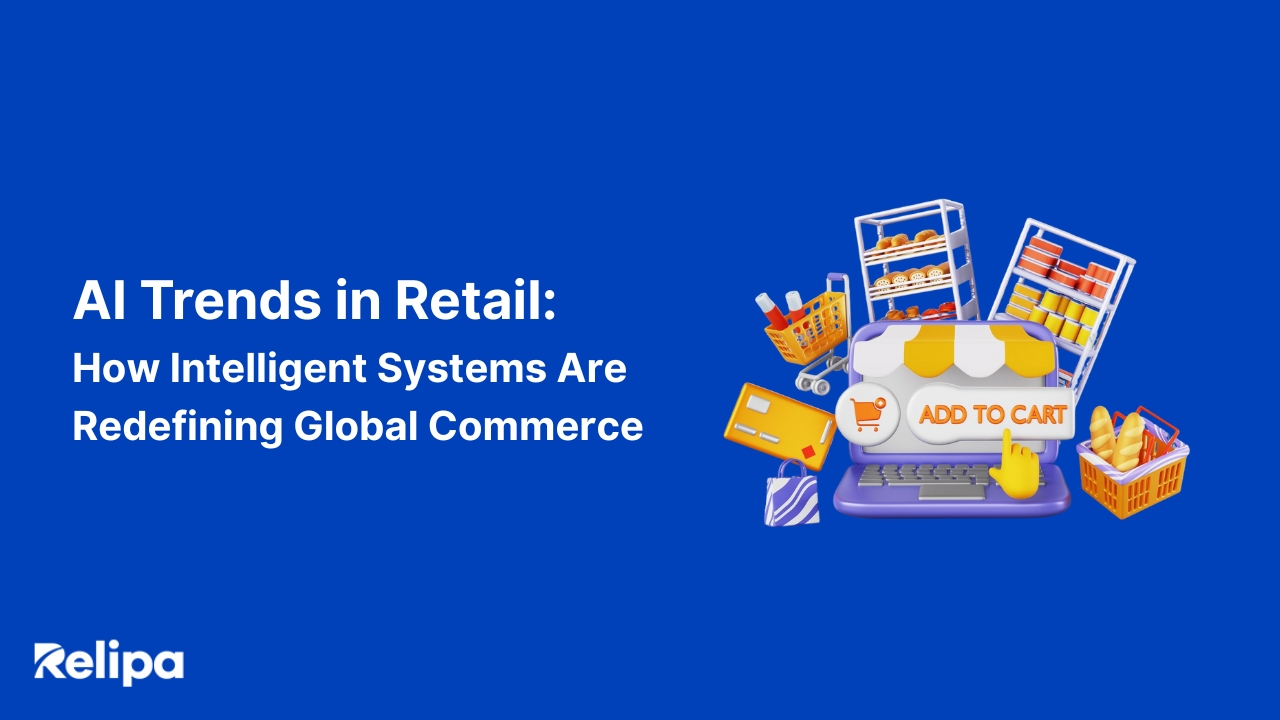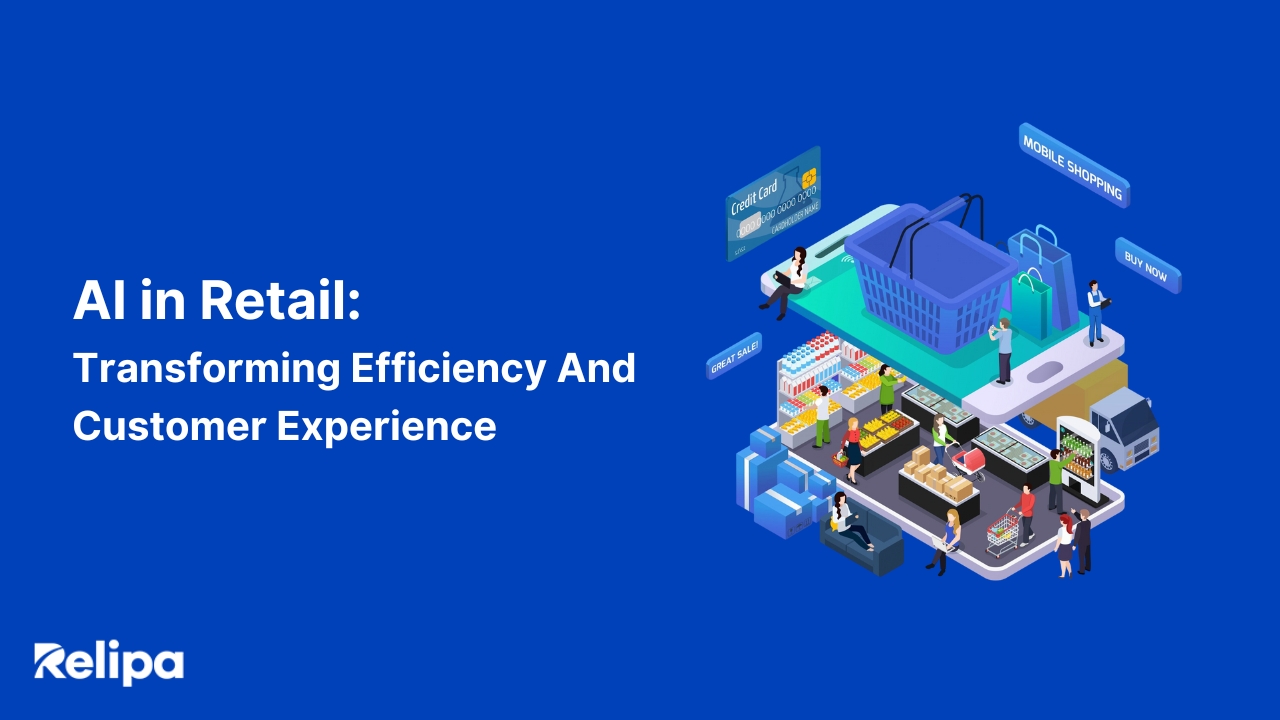Rust Web Frameworks: A Thorough Comparison Of Recommendations From Frontend To Backend
The programming language Rust has recently drawn considerable attention for its robust safety model, high performance, and memory efficiency, leading to its increasing adoption in web application development.
What’s more, thanks to WebAssembly, Rust can now be used for both backend and frontend,, which has sparked growing interest among developers wondering, “Which framework should i use to build web apps with Rust?”
This blog explores the latest Rust web frameworks in 2025, categorized into frontend and backend, and compares their strengths, ideal use cases, and selection tips to help you choose the right one.
What is a Rust Web Framework?
When building web applications efficiently and reliably, a web framework is an indispensable foundation. Rust, too, offers a variety of frameworks that leverage its unique strengths to streamline development.
Definition of a Web Framework
A web framework is a specialized software framework that provides a structured set of tools, libraries, and design conventions to help developers build and manage web applications in an organized and efficient manner.
Its scope is highly flexible, supporting everything from small-scale microservices to large, complex enterprise systems, and any size of web application in between.
Comprehensive web frameworks typically integrate core modules such as HTTP request handling and routing, session and cookie management, database connectivity mechanisms (including ORM – Object – Relational Mapping), template engines for building dynamic user interfaces (UI), as well as security utilities and database migration tools
The primary purpose of a web framework is to abstract away repetitive, low-level technical tasks, allowing developers to focus more deeply on the unique business logic of their applications. This abstraction accelerates the overall development cycle, ensures consistent code quality, enhances security, and improves the productivity of the entire development team in today’s web application environment.
Why Choose Rust for Web Development?
More and more developers and organizations are turning to Rust for their web development projects, drawn by its unique blend of exceptional performance and guaranteed memory safety. Beyond speed, Rust offers a solid foundation for building highly reliable and scalable web applications.
The following characteristics illustrate why Rust has become one of the most compelling choices for developing modern, sustainable web systems.
Absoluate Memory Safety, Without Garbage Collection
At the heart of Rust lies its ownership system and borrow checker, which enforce strict memory management rules at compile time. This design completely eliminates the need for a garbage collector (GC). As a result, common and dangerous programming errors, such as null pointer dereferencing, buffer overflows, and data races, are effectively prevented during runtime. This leads to significantly improved stability and security for web applications.
C/C++ Level Performance
Thanks to zero-cost abstractions and highly efficient system resource management (including memory), Rust delivers performance on par with low-level languages like C and C++. This makes it an outstanding choice for high-throughput web services, APIs, and applications that require ultra-low latency, measured in milliseconds.
Safe and Efficient Concurrency Model
Modern web applications often need to handle thousands, or even millions, of concurrent requests. Rust’s model of fearless concurrency allows developers to write safe, multithreaded code without worrying about data races or complex resource conflicts. Consequently, Rust-based web servers and APIs can handle heavy traffic loads both reliably and efficiently.
Security by Design
Security vulnerabilities such as buffer overflows, use-after-free errors, and race conditions remain major threats in web development. Rust’s compile-time safety checks prevent most of these issues at their root, ensuring that applications built with Rust maintain a fundamentally higher level of security compared to those developed in many other languages.
First-Class WebAssembly (Wasm) Support
Rust is recognized as one of the leading languages in the WebAssembly (Wasm) ecosystem. It enables developers to build high-performance frontend applications that run directly in the browser, almost as fast as native applications. This makes Rust particularly well-suited for complex interactive web apps, online games, or client-side computation-intensive tasks.
Choosing a Framework for Frontend Development
When developing for the frontend with Rust, WebAssembly (Wasm) support is essential. Here are some key factors to consider:
- WebAssembly (Wasm) Support: A good framework should make it easy to compile Rust code to WebAssembly and run it efficiently in the browser. Frameworks like Yew and Leptos are specifically designed with robust Wasm support, enabling smooth and high-performance browser execution.
- Ease of Use and Learning Curve: Because Rust’s syntax differs significantly from JavaScript, the learning curve becomes an important consideration. Well-written documentation, active community resources, and hands-on tutorials can greatly influence how quickly you can get started and become productive with a framework.
- Component Reusability and Architecture: If you’re already familiar with UI frameworks like React, you’ll finđ Dioxus, which adopts a similar component-based declarative model, particularly approachable. It promotes efficient UI construction and high component reusability, making frontend development in Rust more intuitive.
Choosing a Framework For Backend Development
For backend development, the key criteria are performance, asynchronous processing, and a nature ecosystem.
- Asynchronous (Async) Support: Asynchronous processing is one of Rust’s core strengths and is critical for building high-performance web servers. It’s important to check how effectively a framework supports async operations. Frameworks such as Actix Web and Axum are widely recognized for their exceptional async capabilities.
- Safety and Stability: For enterprise-scale applications, the maturity and release stability of a framework are crucial factors. Frameworks that are actively maintained and regulary updated ensure long-term reliability and security throughout your system’s lifecycle.
- Middleware and Database Integration: Strong support for ORMs (Object-Relational Mapping), authentication systems, and other middleware is another key advantage. These features not only boost development efficiency but also enhance the extensibility and maintainability of your web applications.
Frontend Frameworks for Rust
When building web user interfaces with Rust, WebAssembly (Wasm) plays a central role. It allows Rust source code to run directly in the browser with performance that’s close to native speed. Below are some of the most notable frameworks that frontend developers should consider when exploring Rust for web development.
Yew
Yew is a modern framework inspired by React and Elm, designed to make building interactive web interfaces with Rust efficient and intuitive. It supports a component-based architecture and a Virtual DOM, optimizing UI updates for performance. Thanks to its familiar syntax and design, Yew is easy to learn for developers with experience in JavaScript or TypeScript.
Key Features
- A Rust-based frontend offering a development experience similar to React
- Component-driven architecture with a developer-friendly macro system
- High compatibility with WebAssembly, enabling smooth and high-performance frontend applications
Use Cases
- Developing Single Page Applications (SPAs)
- Building complex, interactive web applications that demand real-time updates
Popularity
- GitHub Stars: 31.8K+
- Crates.io Downloads: 2.15M+
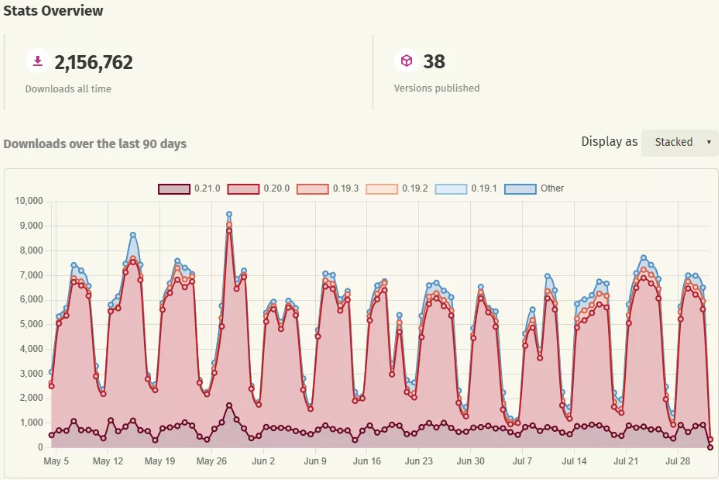
Leptos
Leptos focuses on fine-grained reactivity and maximum performance, making it ideal for building extremely fast and lightweight user interfaces. It supports Client-Side Rendering (CSR), Server-Side Rendering (SSR), and hydration, enabling developers to create high-performance, SEO-friendly web applications with Rust.
Key Features
- A next-generation frontend framework for Rust that fully supports Server-Side Rendering (SSR)
- Utilizes fine-grained reactivity to optimize UI update performance
- Enhances SEO optimization through SSR capabilities
Use Cases
- Web applications that demand top-tier UI performance
- Projects where SEO optimization (via SSR) is a key priority
- Developers adopting a modern reactive programming paradigm
Popularity
- GitHub Stars: 18.8K+
- Crates.io Downloads: 1.45M+
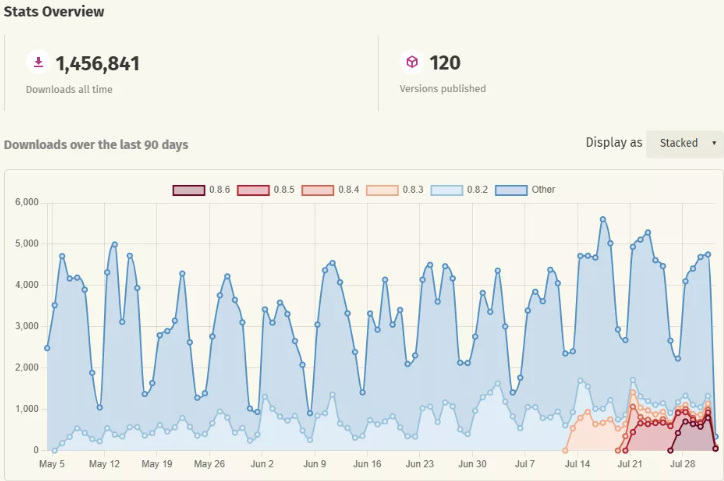
Dioxus
Dioxus is a declarative UI framework inspired by React and SwiftUI, enabling developers to build interfaces not only for the web, but also for desktop (via Tauri or Electron), and even mobile, which is currently under development. It allows you to create rich, cross-platform UIs entirely in Rust.
Key Features
- Inspired by React and SwiftUI, supporting web, desktop, and mobile platforms
- Offers multiple renderers including Web, TUI (Terminal UI), and GUI (Desktop UI)
- Supports live reload and modern developer tools for a smooth development experience
Use Cases
- Cross-platform applications written in Rust (WebAssembly, desktop, and mobile)
- Projects aiming to share UI logic across web and desktop/mobile environments
Popularity
- GitHub Stars: 29.8K+
- Crates.io Downloads: 590K+
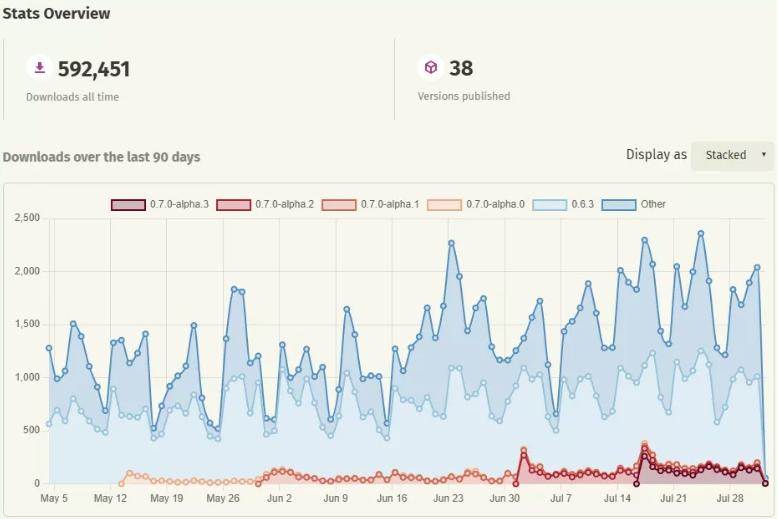
Backend Frameworks for Rust
Thanks to its high performance, memory safety, and excellent scalability, Rust is rapidly established itself as a major player in backend development. Below are some of the most prominent backend frameworks built with Rust.
Actix Web
Actix Web is one of the most well-known Rust frameworks, celebrated for its exceptional performance. Built on top of the Actor system and the Tokio asynchronous runtime, it delivers an extremely fast and powerful async web framework suited for high-performance backend systems.
Key Features
- Consistently ranks at the top of performance benchmarks
- Built on a robust actor model system (based on the actix library)
- Supports async/await, WebSockets, middleware, and a wide range of plugins
- Ideal for systems requiring high concurrency and efficient resource utilization
Use Cases
- High-throughput API servers
- High-performance microservices
- Applications that demand massive scalability and optimized resource
Popularity
- GitHub Stars: 9K+
- Crates.io Downloads: 12.34M+

Axum
Axum is a web framework developed by the Tokio team, designed with a strong emphasis on ergonomics, safety, and extensibility. Built on top of Hyper, the core HTTP library of the Tokio ecosystem, and fully integrated with Tower middleware, Axum delivers a modern, secure, and developer-friendly experience for building asynchronous web applications.
Key Features
- Developed by the Tokio team and fully optimized for asynchronous Rust
- Emphasizes clear structure, easy extensibility, and full use of Rust’s powerful type system
- Seamlessly integrates with Tower middleware and the broader Tokio ecosystem
Popularity
- GitHub Stars: 22.5K+
- Crates.io Downloads: 148.07M+
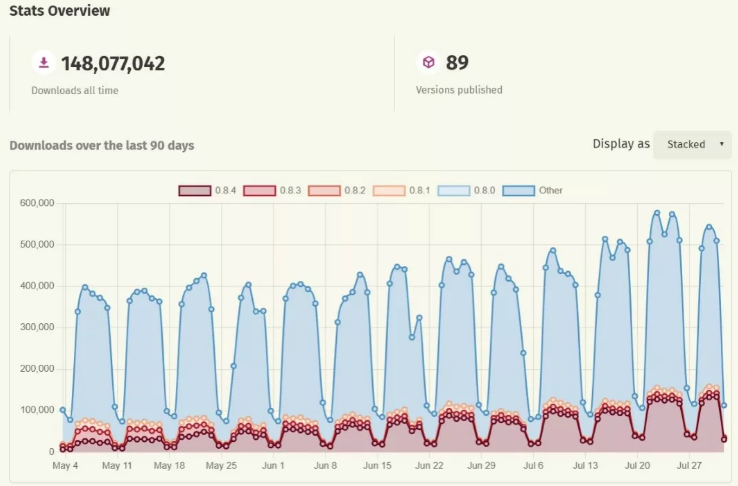
Rocket
Rocket is one of the most popular web frameworks in the Rust ecosystem, desgined around the philosophy of “convention over configuration” to simplify the web development process. By leveraging Rust’s powerful macro system, Rocket allows developers to define routing, request handling, and validation in a declarative, readable, and highly intuitive way.
Key Features
- Developer-friendly API, similar to Flask (Python) or Express (JavaScript)
- Makes full use of Rust macros to automate routing, validation, and parameter parsing
- Built-in support for state management and popular templating engines such as Tera and Handlebars
- Note: Previously lacked asynchronous support, but this has been greatly improved since version 0.5
Use Cases
- Traditional web application development
- Rapid prototyping and MVP builds
Popularity
- GitHub Stars: 25.3K+
- Crates.io Downloads: 7.14M+

Warp
Warp is a web framework built on top of Tokio, designed with a focus on speed, security, and flexibility. It enables developers to build high-performance APIs with minimal boilerplate, offering both simplicity and power for modern backend development.
Key Features
- Highly composable routing system that enables clear and modular API design
- WebSocket and filter support for handling real-time communication
- Fully asynchronous and lightweight, built on Rust’s async ecosystem
- Built-in error handling and authentication mechanisms
Use Cases
- Building high-speed, modular, and well-structured API servers
- Developing lightweight microservices requiring optimal performance and low resource usage
- Web applications that need real-time connections via WebSocket
Popularity
- GitHub Stars: 9.9K+
- Crated.io Downloads: 27.96M+

Poem
Poem is a Rust web framework designed to strike the perfect balance between simplicity and flexibility. With its intuitive API and comprehensive feature set, it enables developers to build web applications efficiently and with clear structure.
Key Features
- Inspired by Tide, supporting asynchronous processing and Tower-style middleware
- Integrated support for OpenAPI, GraphQL, WebSocket, and static file serving
- Clean and modular architecture suited for modern web services
Use Cases
- Building RESTful APIs with well-defined structure
- Developing modern, well-documented web services
Popularity
- GitHub Stars: 4.1K+
- Crates.io Downloads: 2.89M+
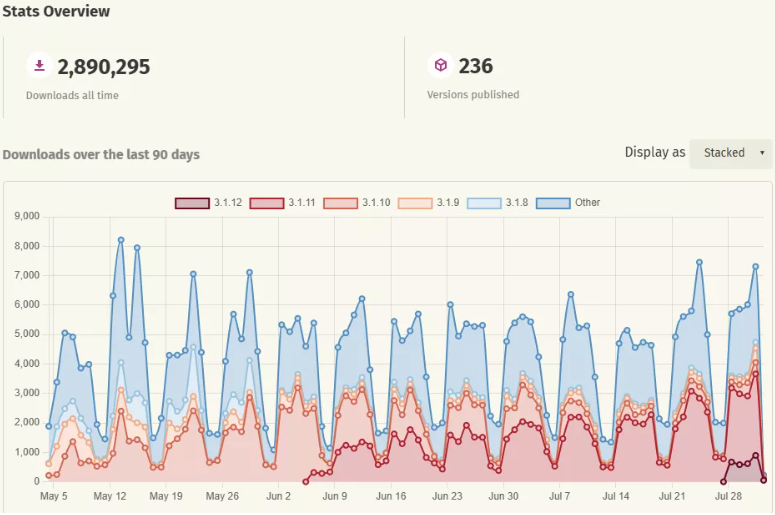
Tide
Tide is a lightweight and developer-friendly web framework built on async-std. It focuses on simplicity, modularity, and a middleware-based architecture, allowing developers to build clean and maintainable web applications with minimal boilerplate.
Key Features
- Developed by the async-std team with a simple, easy-to-understand design
- Beginner-friendly, ideal for developers learning web backend development in Rust
- Modular structure supporting state management, middleware, and asynchronous routing
Use Cases
- Small-scale projects or learning purposes
- Applications that do not require overly complex logic or infrastructure
Popularity
- GitHub Stars: 5.1K+
- Crates.io Downloads: 2.34M+
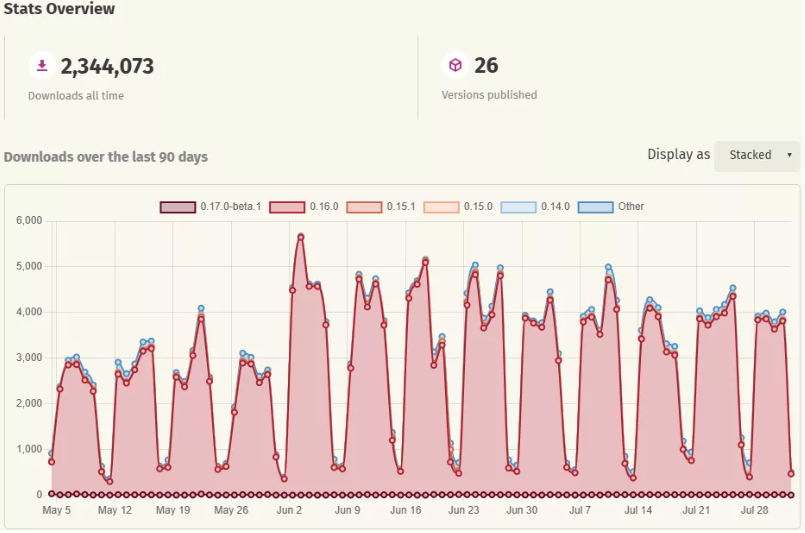
Conclusion
From the analysis above, it’s clear that Rust’s web framework ecosystem is rapidly evolving, both on the frontend and backend. With its exceptional perfor ance, memory safety, and scalability, Rust stands out as an ideal choice for modern web projects.
On the frontend, frameworks like Yew, Leptos, and Dioxus leverage WebAssembly to deliver smooth, near-native user experiences. Meanwhile, on the backend, frameworks such as Actix Web, Axum, and Rocket offer diverse design philosophies that cater to different needs, from raw speed to ease of use and scalability.
Choosing the right framework should depend on your project’s specific requirements, whether that’s performance, developer productivity, or integration capabilities.
At Relipa, our engineering team brings over nine years of hands-on experience across Web3, Blockchain, and AI, with deep expertise in Rust development. We’re ready to help you build secure, high-performance, and future-ready systems tailored to your business goals.
If you’re looking for a trusted partner with proven Rust expertise, get in touch with Relipa today.

